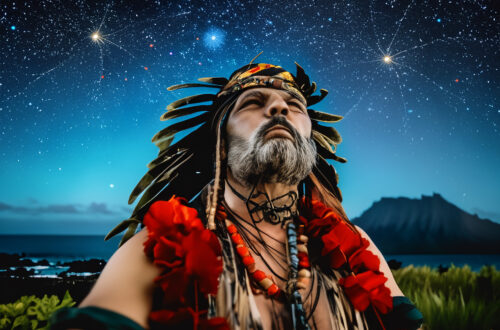
Embracing the Deep Essence of Ho’oponopono: Beyond Discomfort and Suffering
Imagine, for a moment, you’ve just pricked your finger on a thorn. There’s a sharp sting—a sensation. It’s discomfort, no doubt. But is it suffering? Herein lies the crux of a profound understanding—one that the ancient Hawaiian spiritual practice of ho’oponopono seeks to clarify.
Understanding Discomfort versus Suffering
To the layman, the twinge of pain from that prick is discomfort. It’s a mere sensation. Alongside it, and often overlooked, is an innate awareness. While you feel the discomfort, your awareness of it doesn’t flinch, it doesn’t suffer. The pain becomes suffering only when the mind enters the fray, declaring, “This shouldn’t be happening!” Suffering, then, emerges from a mental resistance to the sensation, an insistence that reality should be different.
Now, before we drift further, let’s get one thing clear: ho’oponopono is not just reciting the words, ‘I’m sorry, thank you, please forgive me, I love you.’ Yes, these phrases are its beating heart, but there’s a universe beyond them—deep, transformative practices known as cleaning tools. And no, it’s not related directly to the Law of Attraction, which is more about manifesting desires. Ho’oponopono aims to cleanse and reduce karmic data—those pesky memories and patterns that play on repeat, clouding our judgment.
Ho’oponopono in Practice
The core of ho’oponopono teaches us to observe any sensation, be it physical or emotional, without judgment, label, or description. This might sound simple but think about the last time you experienced a negative emotion. Did you not immediately drown it in a sea of thoughts, pondering its origin or devising escape routes? Such thoughts, while seeming rational, are mere distractions—veils preventing us from truly experiencing sensations as they are.
And here’s where ho’oponopono enters, gently nudging us to clean these emotions. It’s an invitation to the subconscious inner-child to open the door to Divinity, seeking spontaneous inspiration only a higher power can provide.
Through ho’oponopono’s cleaning process, we’re not aiming to manipulate, alter, or rid ourselves of feelings. Instead, we say, ‘Please forgive me. Thank you, I love you’—a call for understanding, gratitude, and love directed at our own subconscious. Over time, this practice enables us to view feelings as fleeting guests, acknowledging their presence but not getting entwined in their narrative.
The Transformative Power of Awareness
At its core, ho’oponopono is a dance between sensation and awareness. Sensations, whether of pain or pleasure, are ephemeral. They come and go. But the awareness—the very essence of our being—Divinity is constant, unchanged by the shifting landscapes of our experiences.
This awareness isn’t suffering or in pain. It isn’t ecstatic or in pleasure. It simply is. An eternal witness, Divinity in its purest form. Grasping this concept and internalizing it requires a conscious effort to observe without judgment, narrative, or bias.
So let’s wrap this up
Ho’oponopono isn’t about ignoring discomfort or dismissing pain. It’s about transcending the narratives we weave around them. It’s about connecting with a more profound, immutable essence within. When practiced with dedication, ho’oponopono doesn’t just unlock doors to wisdom; it flings them wide open, inviting us to step into realms of clarity and peace we might never have known existed.
Remember, the road to understanding is paved with experience. So, the next time discomfort visits, greet it. Observe it. Cleanse it. And in doing so, discover the boundless expanse of your true self.


You May Also Like

The Silent Witness Within: Embracing the Ho’oponopono Way of Life

Ho’oponopono: Journeying Beyond the Illusory Self
